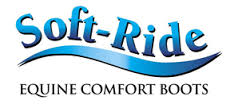
Related Observations
This treatment might be used for a horse exhibiting these signs.
You've viewed 2 of your 2 allowed records this month.
Create a free account for unlimited access.
We're hard at work improving both our website and mobile app with even more useful features for horse owners. Keep an eye out for these upcoming tools, or get the app to try some out now.
Your Stable
Send to Vet
Favoriting
Notes

Cost: $500 to $1,000
These cost ranges are approximate and may vary from region to region.
Additional charges may also apply.
Cost: $500 to $1,000
These cost ranges are approximate and may vary from region to region.
Additional charges may also apply.

This treatment might be used for a horse exhibiting these signs.
This treatment might be used to treat these conditions or ailments.
Chronic Undiagnosed Diarrhea in Adult Horses
Acute Systemic Disease, Generally
Laminitis, Acute
Clostridial, Clostridium Colitis (in Adult)
Duodenitis-Proximal Jejunitis, DPJ
Enteritis, Acute
Carbohydrate or Grain Overload
Black Walnut Shavings Toxicity
Salmonella Colitis (in Growing Foal or Adult)
Metritis, After Foaling
Peritonitis
Pneumonia, Pleuropneumonia & Pleuritis, Generally
Potomac Horse Fever, Neorickettsiosis
Retained Placenta
Your vet considers other treatments that might be used along with or instead of this treatment.

These are skills you might need if your horse is getting this treatment.
Equine health related brand name products and services.

Written, reviewed or shared by experts in equine health
van Eps AW, Pollitt CC, Underwood C, et. al. Continuous digital hypothermia initiated after the onset of lameness prevents lamellar failure in the oligofructose laminitis model. Equine Vet J. 2014 Sep 46(5):623-30.
Kullmann A, Holcombe SJ, Hurcombe SD, et al. Prophylactic digital cryotherapy is associated with decreased incidence of laminitis in horses diagnosed with colitis. Equine Vet J. 2014 46(5):554-59.
van Eps AW, Orsini JA. A comparison of seven methods for continuous therapeutic cooling of the equine digit. Equine Vet J: 2014.